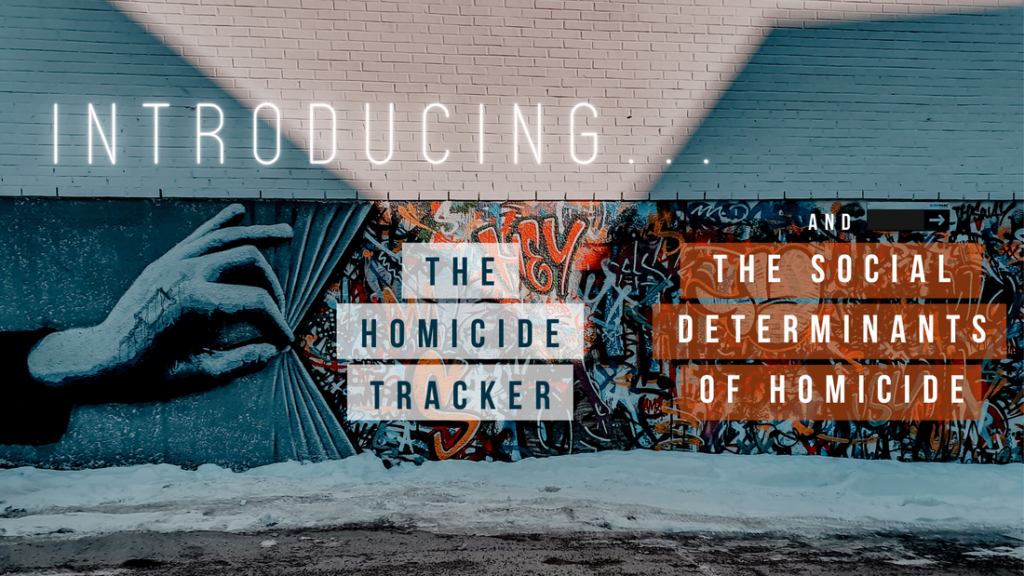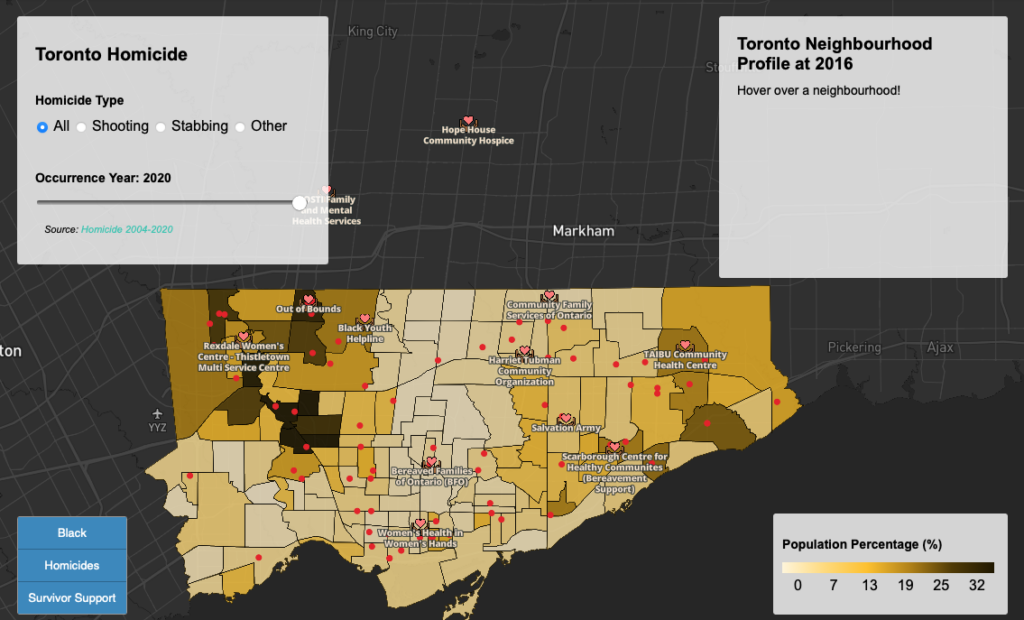A new report and interactive map from The CRIB illustrates the disproportionate prevalence of homicides in predominately Black neighbourhoods in Toronto
Categories: Research, Tanya SharpeAs of January 9th, six known homicides had already occurred in Toronto in 2022 — a statistic that led some reporters to wonder if Canada’s largest city, which typically experiences the highest number of homicides in the country each year, would see more violence than usual in the year ahead.
But while it’s too early to draw these sort of conclusions, a new report and interactive map from The Centre for Research & Innovation for Black Survivors of Homicide Victims (The CRIB) can provide insight into where homicides often happen, the factors that place Black communities at increased risk, and the location of resources available to support those affected by homicide — including families and friends who are faced with the devastating challenge of grieving the violent death of their loved ones.
The CRIB’s Homicide Tracker is an interactive GIS map that marks where homicides occurred in Toronto between 2004 and 2020, relative to African, Caribbean, Black (ACB) communities and service organizations that exist to serve them.
Accompanying the map is a report on the Social Determinants of Homicide, which identifies the key factors that put Black communities at an increased risk of experiencing homicide. The report includes recommendations for an action plan to not only reduce the inequitable conditions that contribute to the disproportionate number of homicides within Black communities but to also increase the availability of culturally responsive trauma-informed care.
“To our knowledge, this is the first project of its’ kind to map the disproportionate impact of homicide on African, Caribbean, Black (ACB) communities in Toronto, while providing context for the root causes of homicide and recommendations for an action plan,” says Dr. Tanya Sharpe, an Associate Professor at the University of Toronto’s Factor-Inwentash Faculty of Social Work and founding director of The CRIB. “The absence of and lack of access to race-based data collection obstructs our ability to comprehend and respond appropriately to the chronic and cumulative impact that homicide has on Black communities. The CRIB aims to change that.”
Of the 600 homicides that occur on average in Canada annually, 75% of the victims are racialized Ontarians and 44% of those victims are African, Caribbean or Black (ACB). Ontario averages around 232 murders per year, and Toronto accounts for 77 of those murders — the highest number of any Canadian city.
The CRIB’s Homicide Tracker depicts the disproportionate prevalence of homicide in ACB neighbourhoods across Toronto and illustrates the availability of resources to assist family members and friends of murdered victims in surviving the aftermath of unthinkable tragedy. Unfortunately, compared to downtown neighbourhoods, Black survivors in the Northwestern neighbourhoods have less access to grief and bereavement supports.
“It is vital that we consider the systemic way that anti-Black racism permeates the very fabric of our society, infecting a plethora of systems and services that survivors of homicide victims engage with on a daily basis as well as the ones they need and interact with as a result of experiencing the murder of a loved one,” says Sharpe.
Included in the Social Determinates of Homicide report is an overview of the educational, employment and income inequalities and mass incarceration rates experienced by Black communities in Toronto. For example, Black Torontonians are four times more likely to be charged with a crime than their white counterparts, while 1 in 15 young Black men in Ontario have been incarcerated, compared to 1 in 70 young white men.
The CRIB’s report also highlights parallels between COVID-19 and homicide: Neighbourhoods in Toronto that are chronically experiencing homicide are also experiencing high infection and death rates due to COVID-19. The social determinants of homicide are the same determinants that disproportionately place Black people at risk of COVID-19 infection.
“Eliminating structural inequities is essential,” says Sharpe. “Addressing these inequities requires advancement in the policies we design, the services we deliver, and the culturally responsive research infrastructures we build.”
> Click here to view The CRIB’s Homicide Tracker.
> Click here to read The Social Determinates of Homicide report.
Related:

